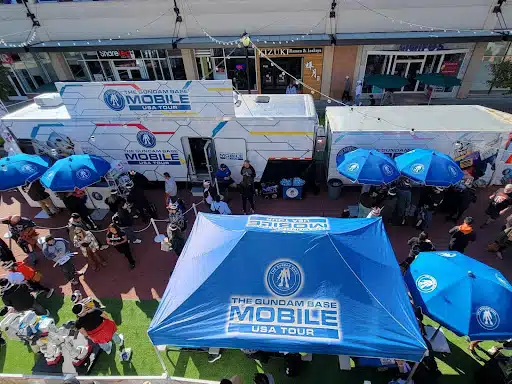According to Steve Randazzo, there is nothing more boring than flat advertising. When brands insert themselves in TV shows, reading materials, or billboards, they hope people will drop everything and listen to their sales pitch. They think that consumers will subconsciously absorb their message and define theirs as a “good brand” next time they go shopping.
Randazzo thinks that this is not a successful approach because it does not engage customers. No brand can expect to boost sales solely with passive marketing.
People do not want some sponsor’s ads popping up on the screen while they are watching an important basketball game. They also do not care about the brand that sponsored the traffic report. They only want to get information about the traffic. By interfering with other important experiences and content, flat ads become annoying and counterproductive.
However, if companies invest money in their marketing and implement an active approach, they will engage their audience, catch their attention, and turn the brand experience into the star of the show.
One way to turn passive marketing into an active campaign is by creating an engaging brand experience and experiential campaigns that will bring flat sponsorships into the real world. For example, you can spend loads of money on putting your company logo behind the end zone of numerous college football fields that will not attract attention. Or, you can call out random fans from the student section, dress them in jerseys with your logo, and involve them in the game. This will entertain and engage people in the stands as they focus on the contestants and get to know your brand.
Another efficient way to engage consumers is to share the same affiliations. Shared affiliations are invaluable assets to marketers who want to engage audiences, simply because shared interests build strong emotional bonds. Consumers will gladly team up with sponsoring companies, provided they have a compelling reason to join forces. When brands actively align themselves with their target audiences’ hobbies, interests, and passions, they achieve high-level engagement that would be impossible otherwise.
These are all advantages of active engagement over passive consumption. However, due to tight budgets, marketers still stick to the safe options, even though they do not deliver the desired results. Instead of settling with “good enough” solutions, businesses need to inject more action into their sponsorships.
Extend the Moment
Steve Randazzo used one of his most remarkable projects to show how important it is to activate the audience on multiple levels and extend the brand experience. He learned this valuable lesson while working on the NASCAR campaign. By simply placing brand logos on various items like T-shirts, or race cars, you will not create a memorable campaign that offers extended brand experience. As he put it, “Race cars crash, T-shirts get covered by jackets, and signs blow away in the wind. Therefore it is more effective to take the proactive approach and extend marketing campaigns beyond one-time events.” Instead of leaving your campaign in the hands of faith, try reviving it by offering extended brand experiences to your customers.
Factors that are out of your control, like the weather, can ruin the most carefully-planned marketing campaign. For this reason, smart marketers always have a backup plan and take proactive measures to extend their exposure beyond singular events. If you plan your brand experiences carefully, you will still be able to engage customers and make the brand experience worthwhile.
For example, Steve’s company had numerous successful state fair activations for Tractor Supply Company for over 5 years so far. However, state fairs take place outside, and weather conditions are impossible to control. They have experienced years where rain poured down for multiple days of the fair, which kept most people home and drove the few attendees who showed up back indoors. Fortunately, they plan for these circumstances “to ensure nothing is a total wash.”
Rather than keeping brand ambassadors out in the rain, they stock them up with coupons and merchandise and have them stroll around the covered areas of the fair. They distribute coupon booklets and chat with the brave attendees who refused to let a little rain stop them from having fun.
Those people might not get the full-scale Tractor Supply Company experience, but they still have positive brand interactions and keepsakes that will drive them to stores once the weather clears up.
Numerous companies have no problem spending money to get their logos on event swag, like pens, notepads, T-shirts, and so on. By doing this, brands assume that they have done enough and that the event attendees will discover how this brand aligns with their needs based on some branded goodies. However, t-shirts and branded pens will not connect people with your brand. Whether you are in B2B or B2C business, you need to be really present at the events you sponsor to extend the moment and build positive emotional connections. The audience needs to know who you are and what you do before they attach any emotion to a free T-shirt. 44% of B2B marketers and 53% of brand managers stated they generated more leads and experienced an increase in sales by being actively present at the events with the target audience.
The author also emphasizes the power of social media to extend the moment, pointing out that “every tweet, snap, post, or photo created by a person at an event has the potential to reach hundreds or even thousands of viewers. These simple actions may lead to exponential growth. You should not focus only on one media. Try to promote several social media options instead of starting the conversation, then let the attendees’ voices work for your brand.
Don’t let your experiential marketing campaign’s success depend on chance. Take passive interactions and turn them to active ones by going one step further. Show up at your events, talk to the audience, and always have a backup plan if unexpected circumstances occur.
Steal the Show
According to Steve Randazzo, “All is fair in love and war, and marketing is a bit of both.” If your competitor uses passive marketing strategies that leave an opening for you to “steal the show,” you don’t want someone else to take advantage of this opportunity. Do what Nike did when they built a brand experience that stole the show from Adidas at the 2014 World Cup and made a lasting impression, gaining more attention and leads than the main sponsor. You will not hear Nike’s marketing team apologizing for this move. But when you decide to step into enemy territory, be sure to choose your battles wisely. You need your own space where you will not need to compete with 20 other brands and get lost in that crowd.
When you decide to ride on someone else’s brand experience wave, you cannot sit idly, expecting everything to work out perfectly by itself. You need to identify why the audience should pay attention to your brand to make it stand out at someone else’s show. Once you do this, you will be ready to build an emotional connection. As the author stated. “The path from experience to brand familiarity to brand loyalty is clear. All you have to deliver is (brand) experience.”
Conclusion
This summary has brought out the essential ideas presented in the final part of the “Brand Experiences: Building Connections in the Digitally Cluttered World” book. In this part, Steve Randazzo offered various efficient methods of audience engagement, backed up with real-life success stories. If you want to find out more about reaching out to your target audience and creating valuable emotional bonds, contact us and order this award-winning book.




